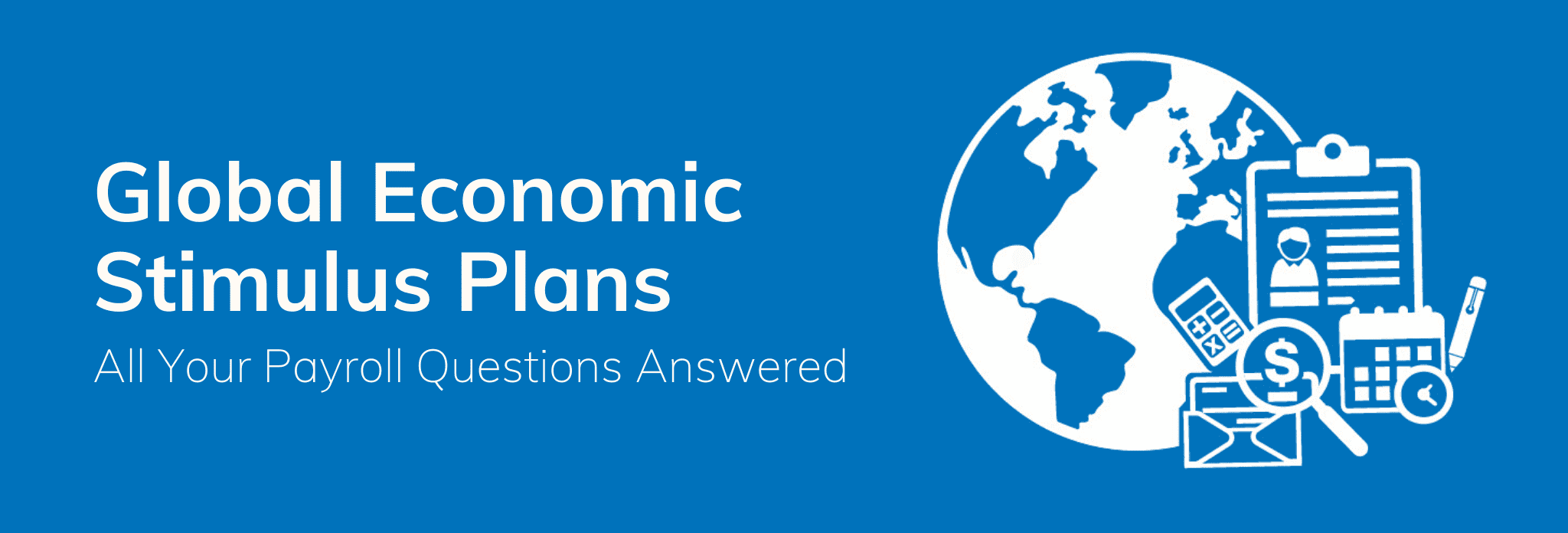The coronavirus pandemic and subsequent social distancing orders have left federal and provincial government agencies to provide Canada COVID-19 stimulus and relief. These measures intend to aid individuals and employers through various tax and benefits changes.
We’ll examine some of the current payroll-related measures. There are also many other fiscal relief measures and programs that may apply to your company. Employers should check federal and provincial government websites and press releases to determine their eligibility for relief measures.
Canada COVID-19 Stimulus and Relief Programs
Canada Emergency Response Benefit
The Canada Emergency Response Benefit (CERB) is a significant piece of Canada COVID-19 stimulus and relief. It will provide temporary income support directly to Canadians who have had to stop working for reasons related to COVID-19. They can receive an amount of $500 per week for a maximum of 16 weeks. Those eligible can apply online through CRA or EI websites (search for CERB).
Canada Emergency Wage Subsidy
Eligible employers can receive a 75% wage subsidy (to a max of $847 per week) for up to 12 weeks starting March 15, 2020. The purpose is to prevent further job losses and to encourage employers to re-hire workers previously laid off as a result of COVID-19. This is available to eligible employers that have seen a drop of at least 30% in monthly revenues (15% for March). Employers can apply through the CRA’s My Business Account portal. The program has recently been expanded to add a 100% refund of employer-paid contributions to EI, CPP, QPP, and QPIP for employees who are on paid leave eligible for the CEWS subsidy. Employers must continue to remit as usual and should apply for this refund as part of their CEWS application.
10% Temporary wage subsidy for employers
The government will subsidize 10% of the wages paid between March 18, 2020, to June 19, 2020, up to $1,375 per employee, to a maximum of $25,000 total per employer. Employers can benefit from this program right away by reducing their payroll tax remittances to the CRA by the amount of the subsidy. Note you may not reduce your remittances of CPP or EI employer amounts.
You will need to retain enough information to support the subsidy claim, including total payroll from March 18, 2020, to June 19, 2020, federal income deductions for those periods, and the number of eligible employees.
Note for Quebec employers; the above measure only applies to federal remittances.
Work Sharing Program
As part of COVID-19 stimulus and relief in Canada, the maximum duration of the Work-Sharing program is extended from 38 weeks to 76 weeks for employers affected by COVID-19.
Canada Summer Jobs Program
Employers, including those in the private-sector who hire students, will be able to apply for a subsidy of up to 100% of minimum wage rates. In addition, there is an extension to the eligibility period, and part-timers will be included in the program.
Canada COVID-19 Relief for Payroll Remittances
Federal – While many CRA filing and payment deadlines have been extended, there are currently no changes to payroll remittance due dates.
Alberta – Remittance of WCB premiums is deferred to 2021. There will be a waiver of 50% of the 2020 premiums for small and medium employers (< $10M in insurable earnings).
British-Columbia – Payment of WorkSafeBC premiums can be deferred to June 30. The deadline for Health Tax payments for 2019 has been extended from March 31 to September 30, 2020.
Ontario – WSIB remittances are deferred for 6 months. Employer Health Tax exemption will increase from $490k to $1M for 2020 only.
Québec – There are no changes to the payroll tax remittances due dates. Revenu Quebec is asking employers to temporarily suspend administrative garnishments (SAA) and requests for payment (DFP) for tax debts only. Family support and other garnishments remain as-is.
COVID-19 Stimulus and Relief Considerations for SAP Payroll
Although to-date SAP has not yet identified any needed payroll system changes for Canada, here are some things to think about:
- You may want to specify additional reports or queries to meet your record-keeping needs.
- We know that some employers had already set up new wagetypes and related config during previous pandemic events like H1N1. You may be able to repurpose what you already have in place.
- Some employers are choosing to pay additional amounts to front-line workers, for example. One thing to consider is the impact of posting. Where do you want to charge these extra payments to regular labour accounts or elsewhere?
- What are the implications of deferred remittances on your processes (3PR or other)?
- Garnishments: Other than the recent Revenu Quebec announcement, we have not seen nor do we expect changes to family support or court-ordered garnishments. But changes to your employee’s earnings will have an impact on amounts. The CRA will provide relief on a case-by-case basis, on request.
We at Rizing will continue to keep a close eye on SAP Payroll developments for Canada COVID-19 stimulus and relief as they develop. SAP has a frequently updated blog to track the developments.


